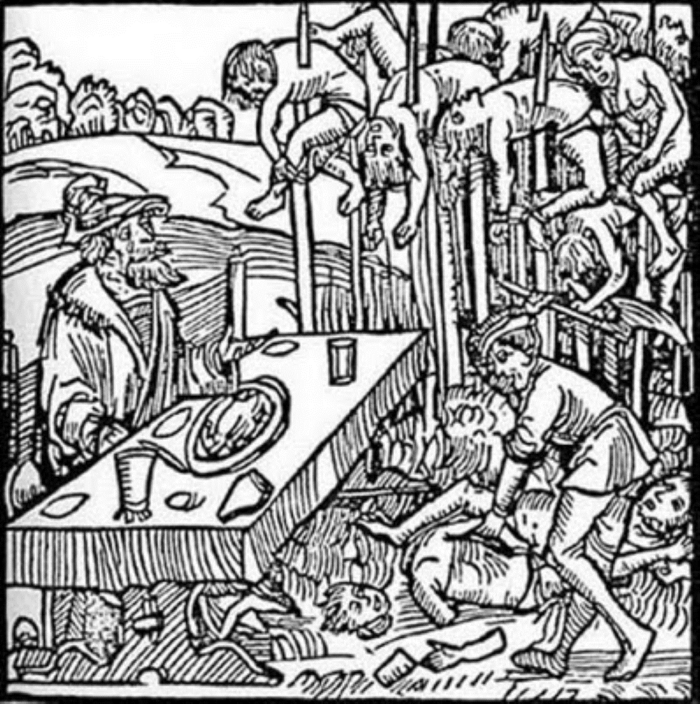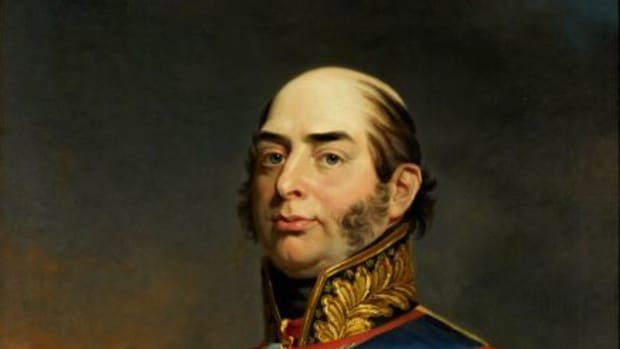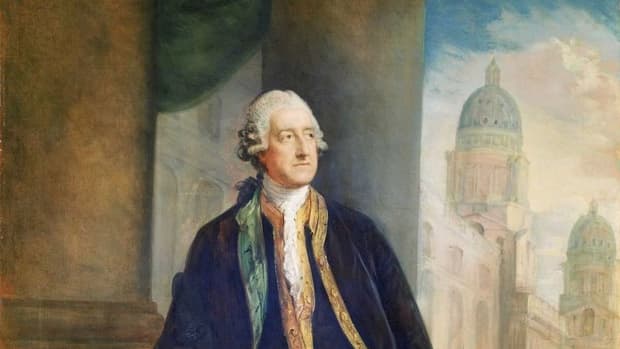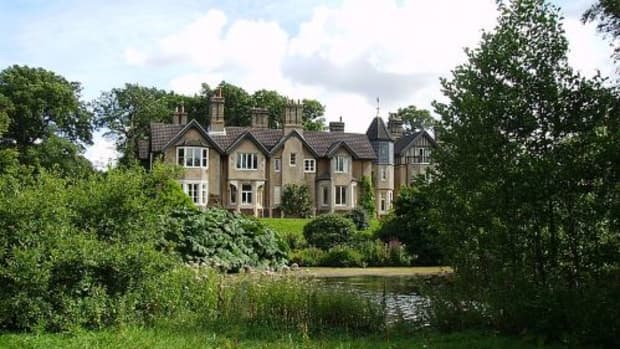Who Was Vlad the Impaler? The Legendary Killer of Over 80,000 People
The House of Draculesti
The brutal Vlad the Impaler, believed to be the inspiration for Bram Stoker’s Dracula, was born in Sighisoara, Transylvania (today’s Romania) in 1431. He was part of the Draculesti dynasty.
Vlad was the 2nd son of Vlad II Dracul and Eupraxia of Moldavia. The addition of an "a" to his surname denoted that he was Vlad II’s son. Draco meant dragon and Vlad II Dracul was a member of the Order of the Dragon. In modern Romanian “drac” means devil.
Even by medieval standards Transylvania and its neighbours were violent. It was a prime territory between the European countries that fought to maintain Christianity and the Ottomans who sought land gains and to increase the spread of the Islamic faith.
Vlad II Dracul was appointed as the ruler or voivode of the Principality of Wallachia when his son Vlad was five years old. The family relocated to Targoviste.
Ottoman Sultan Murad II Holds Vlad Hostage
In 1442 Vlad and his younger brother Radu travelled to the Ottoman court with their father. Sultan Murad II craftily used the boys as collateral after discussions with Vlad II Dracul. The Sultan arrested his guests because he wanted to ensure that the Voivode of Wallachia fulfilled his promises of allegiance. Vlad II was released and sent back to Wallachia but his sons remained with Murad II and his son Mehmed for almost six years.
The boys were educated in philosophy and science and were taught how to be warriors and capable horsemen. However, Vlad and Radu were also under constant threat from the Sultan’s whims and tortured. It was probably at the Ottoman court that Vlad first saw people being impaled on stakes. This was a device he used with devastating effects later in his life.
In 1447 Vlad II Dracul and his eldest son Mircea II were assassinated by rebel Wallachian nobles called boyars. The father’s life ended in the swamps of Balteni and Mircea; he was tortured, blinded and buried alive.
Vlad the Impaler: Voivode of Wallachia
Vlad returned to Wallachia and tried to claim leadership as Voivode Vlad III Dracula (Vlad III Draculea in Romanian). Unfortunately for Vlad, his younger brother Radu, the boyars and the Sultan opposed him. After a troubled two-month rule, Vlad III Dracula was deposed. It took him eight years to regain control.
Throughout his second period as Voivode of Wallachia Vlad showed little, if any, mercy towards his enemies and he earned the sobriquet of Vlad the Impaler, Vlad Tepes in Romanian.
He favoured impaling his foes on wooden stakes rising from the ground. The victim was impaled through the rectum and the stake came out through the mouth or neck. Vlad left the impaled bodies on the stakes during a torturous death and as lifeless corpses. Some of the stakes he used were not sharply tipped; this was a way of prolonging the agony rather than diminishing the suffering. A blunt stake didn’t puncture the vital organs and so the impaled person took longer to die.
Vlad III Dracula Leaves Over 80,000 Dead
He did not limit impalement to domestic enemies. His international opponents were just as likely to find themselves impaled and staring up to the sky screaming as their lives ebbed away. There were unconfirmed reports that Vlad liked to dip bread in the blood of his dying victims and eat the morsels as they watched.
In 1453 the Ottomans took control of the important city of Constantinople and in the following years, they tried to invade several European countries to get further inland. A story emerged that Sultan Mehmed II was so repulsed by the sight of 20,000 impaled and decaying corpses outside the city of Targoviste that he rode back to Constantinople instead of engaging in battle.
Vlad the Impaler's success in creating order in Wallachia was seen as positive by contemporaries but his rule was undeniably one of carnage. Over 80,000 people—men, women, children, soldiers, peasants and nobles (including his rival from the House of Danesti Vladislav II)—were not safe from his butchery.
One horrendous example of his barbarity was the invitation that he issued to the boyars of Wallachia to dine with him. He had each one of his guests stabbed and then thrust onto a stake to die painfully.
Capture and Imprisonment: 1462-1475
In 1462 Vlad the Impaler left an entire battlefield littered with bodies impaled on stakes as a warning to advancing Ottoman soldiers. He was said to have dined among the bodies before he departed.
The same year Vlad was only saved from capture by the Ottoman army by the Hungarians who he thought were allies. Their ruler Matthias Corvinus I of Hungary decided to lock Vlad up. Matthias then arranged marriages for his prisoner.
Vlad’s first wife’s identity remains unconfirmed but she may have been an illegitimate sister of the Hungarian king. She died in circa 1473. His second wife was Justina Szilagyi, a cousin of Matthais I; they married in 1475.
The Russian ambassador Fyodor Kuritsyn wrote that Vlad had three sons but by whom is disputed.

A 1499 woodcut of Vlad the Impaler dining among the impaled corpses on a battlefield.
Wikipedia Public Domain
Vlad the Impaler Beheaded
In 1476 Vlad III Dracula was released by Matthias I and he managed to reclaim power in Wallachia. His victory was short-lived. He was killed in battle near Bucharest on the 14th of December 1476. After he was unceremoniously beheaded his head was sent to Sultan Mehmed II and displayed.
Vlad’s successor was his younger brother Radu, known as Radu III cel Frumos (the handsome). His reign was just as fleeting; he died aged 36 or 37 the following year. The Danesti dynasty took control of Wallachia. The Sultan died four years later, possibly poisoned.
Whatever other achievements Vlad III Dracula, Voivode of Wallachia made during his three terms as leader he will forever be remembered for his barbarity.
Sources
- Transylvania | Location & History | Britannica
- Vlad the Impaler: The real Dracula was absolutely vicious
- Vlad the Impaler | Biography, Dracula, Death, & Facts | Britannica
- Dracula | Summary, Characters, & Facts | Britannica
More Real People Portrayed as Fictional Characters
- In Search of the Real Daniel Boone
Many books, articles, and even a television series tell of the many exciting exploits of the legendary frontiersman Daniel Boone, however, many embellish his accomplishments. It would be over a century after his death before his real story would emer - “The King and I”: The Real King of Siam
Actor Yul Brunner famously played the king of Siam in the stage musical and film "The King and I" but was the real monk turned king Mongkut/Rama IV of Siam (Thailand) accurately portrayed in governess Anna Leonowens' memoirs which inspired the stage - Was King Arthur a Real Person?
Stories about King Arthur and his Knights of the Round Table have existed for centuries. But are they based in fact, or is Arthurian legend the result of several creative minds throughout history?
This content is accurate and true to the best of the author’s knowledge and is not meant to substitute for formal and individualized advice from a qualified professional.










